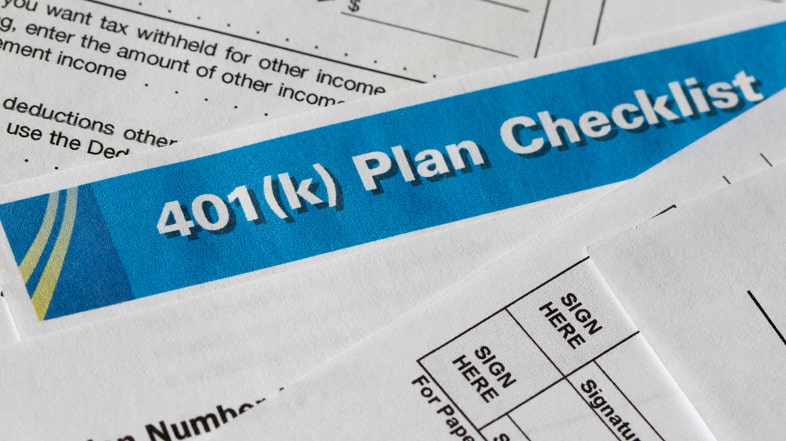
How Much Is Your Forgotten 401(k) Costing You in Potential Savings?
Many investors who have left a 401(k) behind with their past employer may not think it’s a big deal.
But it is. And it’s one that may be costing you more in retirement savings than you think.
Capitalize recently published a white paper The True Cost of Forgotten 401(k) Accounts stating as of May 2021, there are an estimated “24.3 million forgotten 401(k)s holding approximately $1.35 trillion in assets, with another 2.8 million left behind annually.”¹
And that leaving behind a 401(k) with a past employer “has the potential to cost an individual almost $700,000 in foregone retirement savings over a lifetime.²
Yes, you read that correctly. Almost $700,000 in savings being left behind in low-return investments.
While your situation is unique, and the potential amount you may be missing out on depends on your balance and fees, these statistics make the case for why it’s not the best idea to leave behind a 401(k).
You may be able to leave your 401(k) account with your previous employer, but there are several disadvantages to doing so:
- Your account will remain subject to plan rules.
- You will continue to have limited investment options.
- You will have another account to keep up with.
And then there are the ongoing fees that you incur. You may not even realize your old 401(k) may be a high-fee plan.
According to the Capitalize white paper, “There remains huge variance in 401(k) plan fees — that is, there’s a big gap between the highest fee 401(k) plans and low-fee 401(k) plans. There’s also a big gap between high-fee plans and the all-in costs of a low-fee IRA like an automated or robo-advisor IRA which range between 0.20% and 0.40%.”³
Another disadvantage in leaving behind a 401(k) is that it may result in overlapping funds that may not suit your tolerance for risk.
Far too many investors believe that, when they leave behind a 401(k), their past employer is taking care of it for them.
This is not true. It’s your money and your responsibility.
This belief may be costing you more retirement income than you realize. Because if you fail to regularly rebalance your 401(k), you are essentially turning your investments over to chance.
Failing to regularly rebalance your 401(k) portfolio often results in significant losses during bad markets and opens you up to more risk exposure than you initially intended.
And, you may be missing out on earning more and keeping more of your retirement savings – which means you may need a part-time job to make ends meet during retirement.
401(k) Rollover Options

You have three options when it comes to moving your old 401(k):
- Roll over into your new employer’s 401(k), providing it’s allowed.
- Roll over into an IRA or Roth IRA.
- Cash it out .
There are potential advantages to rolling over your old 401(k) into an IRA:
- You can consolidate more than one 401(k) account into an IRA.
- With the right advisor, you have virtually unlimited investment options and more control over the account.
- Tax withholding is not required if you need a distribution.
- You have more control over naming or changing your beneficiaries.
If the purpose of your 401(k) is to save money for retirement, we highly advise against cashing out an old 401(k) because you may disrupt your retirement by taking it out early.
Also, it can be costly.
If you cash out and you are under 59½, you will have to pay a 10% penalty on top of the taxes. The IRS generally requires an automatic withholding of 20% of your 401(k) for an early withdrawal for taxes.
With your 401(k), you got a tax break for saving the money in the first place because all contributions are pre-tax.
When you cash out of your 401(k) early, all that money you put in – and the gains you made – become taxable as ordinary income.
Sure, you may get some of that back on your next tax return, but between the penalty and the tax withholding, you will see a good chunk of your savings go
Types of 401(k) Rollovers
There are two types of rollovers: direct and indirect.
#1 Direct Rollover
When you transfer your money from one retirement account directly into another. With a direct rollover into your new employer’s 401(k) plan or into your IRA, you never touch the money, and no money is withheld for taxes.
A direct rollover is advisable.
#2 Indirect Rollover
When your 401(k) account funds are given to you via check for deposit into a personal account, with the intention of reinvesting those funds into a new retirement account within 60 days or less.
You can make a rollover at any age, but there are specific rules that must be followed.
Most importantly, you must generally complete the rollover within 60 days of the date the funds are paid from the distributing plan.
If properly completed, indirect rollovers aren’t subject to income tax.
If you fail to complete the rollover or miss the 60-day deadline, all or part of your distribution may be taxed and subject to a 10% early distribution penalty (unless you are age 59½ or another exception applies).
In addition, your employer must withhold 20% of the payment for income taxes. After taxes are taken out, you will be sent the funds via check.
This means that, if you want to roll over your entire distribution, you’ll need to come up with that extra 20% from your other funds (you’ll be able to recover the withheld taxes when you file your tax return).
Note that the IRS only allows for one indirect rollover per 12-month period.
Rolling Over a 401(k) If You Have Company Stock

You need to be careful when rolling over your 401(k) if it contains shares of your former employer’s stock that has appreciated over time.
In fact, in some cases, rolling over the stock into an IRA could be a costly mistake.
Typically, 401(k) plan distributions are subject to ordinary income taxes.
However, there is a special rule that applies when you receive a tax distribution of employer stock from your plan.
This rule is referred to as the Net Unrealized Appreciation, or NUA, rule.
You would only pay ordinary income tax on the cost basis of the stock.
The cost basis is the stock price at the time that it was purchased for you by the plan. Any appreciation in the stock will receive more favorable long-term capital gains treatment.
The NUA rule does not apply if you roll over the stock to an IRA.
To take advantage of NUA rules, it has to be done as part of a full and final rollover from an employer plan.
Making a Decision to Roll Over Your Old 401(k)

It’s important to understand all your rollover options before you make a move, and seek professional help.
Each investor’s situation is unique, and speaking with someone who can navigate the rollover process helps you make the best decision possible for your financial future.
Have questions about rolling over your 401(k)? Book a complimentary 15-minute 401(k) Strategy Session with one of our advisors.
Book a 401(k) Strategy Session
Sources:
- https://www.hicapitalize.com/resources/the-true-cost-of-forgotten-401ks/
- https://www.hicapitalize.com/resources/the-true-cost-of-forgotten-401ks/
- https://www.hicapitalize.com/resources/the-true-cost-of-forgotten-401ks/








